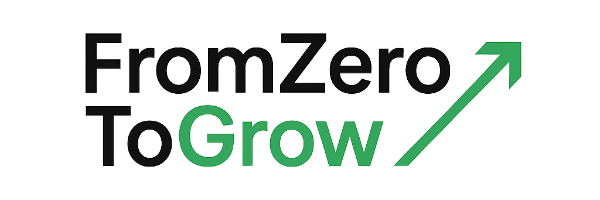Ultimate Guide to Building a Network from Scratch
Learn how to build a meaningful professional network from scratch, focusing on genuine connections and long-term relationships.

Building a professional network isn't just about collecting contacts - it's about forming genuine, meaningful connections that support your career and personal growth. Whether you're starting your first job, transitioning careers, or launching a business, your network can unlock opportunities, provide guidance, and act as a support system. Here's a quick breakdown of how to build and maintain your network effectively:
- Start with people you know: Leverage existing relationships - friends, family, colleagues, and acquaintances.
- Expand online: Use platforms like LinkedIn, Meetup, and Facebook Groups to connect with professionals globally.
- Engage locally: Attend community events, workshops, and networking mixers to meet people face-to-face.
- Focus on quality over quantity: Build intentional, two-way relationships where value is exchanged.
- Debunk myths: Networking isn't just for extroverts or formal events - it's about consistent, purposeful efforts.
- Maintain connections: Follow up, stay in touch, and provide support to keep relationships strong.
Networking is a long-term process that requires consistent effort. Start small, be intentional, and watch your connections grow into a valuable resource for your goals.
No Connections? No Problem! How to Build a Powerful Professional Network from Scratch !
Networking Basics: What You Need to Know First
We’ve all heard the saying, “Your network is your net worth.” But before diving into networking strategies, it’s important to understand the fundamentals. Networking isn’t just about collecting contacts - it’s about building meaningful relationships. Let’s break it down.
What is Networking?
At its core, networking is about creating intentional, mutually beneficial relationships that align with your personal and professional goals. The focus isn’t on the quantity of connections but the quality. Effective networking involves building genuine ties where both parties contribute value over time.
Think of it as strategic relationship building. It’s not just about making friends - it’s about connecting with people who can help you grow, gain insights, and achieve your goals while you offer the same in return. This could mean finding a mentor to guide your career, collaborating with peers on projects, or exchanging knowledge with industry professionals.
The key here is mutual benefit. Networking isn’t a one-sided transaction. It’s about offering value - whether that’s advice, resources, or introductions - while being open to receiving help when needed. When you approach networking with a mindset of giving, people are naturally more inclined to support you in return.
As Michele Jennae wisely said:
"Networking is not about just connecting people. It's about connecting people with people, people with ideas, and people with opportunities."
Primary vs. Secondary Connections
Understanding the difference between primary and secondary connections can significantly expand your networking reach - even if you’re starting with a small circle.
- Primary connections are the people you know directly. This includes family, friends, colleagues, classmates, neighbors, and anyone you’ve interacted with personally. These are your first-degree connections - people who can vouch for your character and skills.
- Secondary connections are the people your primary connections know. These are second-degree connections, accessible through introductions or referrals. For example, your coworker’s friend, your cousin’s business partner, or your neighbor’s colleague.
Here’s why this distinction matters: your network is bigger than you think. Even if your immediate circle feels small, secondary connections can open doors you didn’t know existed. Maybe your former college roommate knows someone hiring in your dream industry. Or your neighbor might have a friend who works at a company you admire.
To get started, map out your primary connections and think about their networks. You don’t need to know everyone directly - you just need to know someone who can make an introduction. This approach makes networking feel less daunting and more achievable.
Common Networking Myths Explained
Misconceptions about networking can hold you back before you even begin. Let’s debunk some of the most common myths so you can approach networking with confidence.
Myth 1: "Networking is only for extroverts."
This couldn’t be further from the truth. Networking is a skill, not a personality trait. In fact, introverts often excel at networking because they focus on meaningful one-on-one interactions rather than trying to work a room. Planning, practice, and consistency are far more important than being naturally outgoing.
Myth 2: "Networking is selfish."
Some people view networking as purely transactional, but that’s not the case. Successful networking is built on reciprocity. When you prioritize helping others - whether by sharing advice, resources, or introductions - you establish trust and goodwill. This creates a foundation for long-term, mutually beneficial relationships.
Myth 3: "You only need to network when you need something."
This reactive mindset rarely works. Building relationships takes time, so don’t wait until you’re in a bind to start networking. Make it an ongoing process. The connections you nurture today will be there to support you when you need them in the future.
Myth 4: "Networking only happens at formal events."
Networking opportunities are everywhere - in the workplace, within your community, and online. Platforms like LinkedIn can help you connect with people, and you can deepen those relationships through conversations, meetings, or even casual coffee chats.
Myth 5: "You need to find the ‘right person.’"
This adds unnecessary pressure. Instead of chasing a specific individual, focus on building a diverse network. You never know where opportunities might come from.
Myth 6: "Networking should feel natural, not forced."
While some relationships may develop organically, effective networking often requires planning and effort. Researching people or events, preparing conversation starters, and setting clear goals can make networking more productive and less awkward.
Herminia Ibarra, a professor at London Business School, captures the essence of networking beautifully:
"A good network keeps you informed. Teaches you new things. Makes you more innovative. Gives you a sounding board to flesh out your ideas. Helps you get things done when you're in a hurry. And, much more."
How to Build Your First Network
Ready to take the plunge into networking? Good news: you don’t need fancy events or insider connections to get started. You can begin right where you are, using the people and tools already within reach. Here’s how to lay the groundwork, step by step.
Start with People You Already Know
Your current relationships are the easiest and most natural place to begin. These are the people who already know you, trust you, and are often happy to help.
Start by making a list of everyone in your circle. Think broadly - family, friends, old classmates, former coworkers, neighbors, gym buddies, and even casual acquaintances from social events. You never know who might have a connection that could open doors.
For example, your college roommate might work at a company you admire, or your neighbor could know someone in your dream field. When reaching out, keep it genuine. You’re not asking for favors - you’re reconnecting and sharing your goals.
Be specific when explaining your interests, such as: “I’m looking into digital marketing and would love to hear from someone with experience in the field.” This clarity makes it easier for others to help.
And don’t forget to follow up with gratitude. If someone offers advice or makes an introduction, send a quick thank-you message and update them on how things are going. It’s a simple way to strengthen the relationship and keep the connection alive.
Use Online Platforms
After you’ve tapped into your personal network, it’s time to broaden your reach online. Digital platforms make it easy to connect with professionals from all over the world, no matter where you’re starting from.
LinkedIn is a must-have tool for professional networking. It’s the go-to platform for building connections and sharing industry insights. Begin by creating a polished profile: use a professional photo, write a strong headline, and include relevant keywords in your summary to showcase your goals and expertise.
When reaching out to someone, always personalize your message. Mention a shared interest or something you admire about their work. For instance: “Hi Alex, I saw you’ve been working in renewable energy, which is an area I’m exploring. I’d love to connect and hear more about your journey in the field.”
Meetup is another great option, especially for finding local networking events. Search for groups that align with your career interests - whether it’s tech, marketing, or entrepreneurship. Many cities have Meetup groups tailored to professionals looking to grow and collaborate.
Don’t overlook Facebook Groups, particularly those focused on your industry or local community. You might find groups connected to your alma mater, your city’s business scene, or niche professional fields. These spaces often foster meaningful discussions and connections.
Get Involved in Your Local Community
While online networking is powerful, face-to-face interactions can build deeper, longer-lasting relationships. Your local community offers plenty of ways to meet professionals in a more casual setting.
Local chapters of national organizations are a goldmine for meeting people in your field. Many cities have chambers of commerce or industry-specific groups that host events like workshops, social gatherings, and networking mixers.
Community events and workshops are another excellent option. Look for business seminars, professional development classes, or entrepreneurship meetups in your area. These events attract people who are motivated and eager to connect - just like you.
Co-working spaces are also buzzing with opportunities. Even if you don’t need a permanent desk, many co-working hubs offer day passes or host public networking events. These spaces bring together freelancers, remote workers, and entrepreneurs from a variety of industries.
And don’t underestimate the power of volunteer work. When you volunteer for causes you care about, you’ll meet like-minded professionals in a collaborative environment. Sharing meaningful experiences often leads to strong, authentic connections.
When you attend local events, approach conversations with curiosity. Ask people about their work, the challenges they’re tackling, or projects they’re excited about. Be a good listener and look for ways to contribute, even if it’s something small like sharing a helpful article.
Afterward, follow up with a LinkedIn request or email while the interaction is fresh. Mention something specific from your conversation to keep the connection personal.
Building your first network doesn’t have to be overwhelming. Focus on creating a few meaningful connections each month. Over time, those relationships will grow, and your circle will naturally expand through introductions and referrals. Networking is a marathon, not a sprint - consistency is what matters most.
Growing and Maintaining Your Network
Building a network from scratch is just the beginning. The real challenge lies in maintaining and growing those connections over time. Think of it like tending a garden - consistent care and attention are necessary to help your relationships flourish. The focus shouldn't be on collecting the most contacts but on fostering meaningful connections that bring value to both sides.
Ask for Referrals and Introductions
One of the best ways to expand your network is by leveraging the relationships you already have. When someone in your circle introduces you to a new contact, it often carries more weight than reaching out cold.
Be clear and specific about the type of person you'd like to meet. For example, instead of vaguely saying, "I want to meet more people in marketing", try something like, "I'm looking to connect with someone in content marketing for SaaS companies." This clarity makes it easier for your contact to think of someone who fits.
When asking for an introduction, provide a little context about yourself and why you'd like to connect. For instance, you might say, "I'm a graphic designer transitioning into UX design, and I'd love to hear about Sarah's experience making a similar career move." This helps your contact make the introduction in a way that feels natural and relevant.
Timing matters, too. Avoid jumping into requests for introductions right after meeting someone. Let the relationship grow through a few meaningful interactions first. And once someone facilitates an introduction, take the time to send a quick thank-you note. It’s a simple gesture that strengthens the bond.
Next, broaden your network by exploring online communities.
Join Online Communities
Online communities are an excellent way to expand your reach and connect with professionals outside your immediate circle. These platforms allow you to share knowledge, learn from others, and establish relationships with people from all over the world.
Focus on platforms where your target audience or industry peers are active. For instance, software developers might find value in engaging on Stack Overflow or GitHub, while marketers could benefit from participating in Slack groups or platforms like GrowthHackers. By contributing helpful resources, answering questions, and offering thoughtful insights, you can position yourself as someone worth connecting with.
Active participation is key. Respond to comments, ask follow-up questions, and build on others' ideas. These interactions can often lead to private conversations and deeper connections. When the time feels right, suggest taking the conversation offline through LinkedIn or a video call.
Keep Your Relationships Strong
Building a network is one thing - keeping it strong is another. Successful networkers know that nurturing existing relationships is just as important as creating new ones.
Stay in touch regularly without always needing a reason. Whether it’s a quick message to check in, sharing an article you think they’d enjoy, or simply saying hello, these small gestures show you care and help you stay on their radar.
Look for ways to support your contacts. Share their work, refer potential clients, or connect them with someone who could help them. Acting as a connector not only strengthens individual relationships but also fosters a sense of community within your network.
Set aside time each week for relationship-building activities. This could be as simple as scheduling a coffee chat or sending a note of appreciation. Consistency is key to maintaining long-term connections.
Celebrate your contacts' achievements. A quick congratulatory message when someone gets a promotion or starts a new project can leave a lasting impression. And when you’re in conversation, practice active listening - focus on what they’re saying, ask thoughtful follow-up questions, and remember the details they share. This builds trust and deepens your connection.
Ultimately, it’s the quality of your relationships - not the quantity - that makes your network valuable. By investing time and effort into genuine connections, you’ll cultivate a network that grows naturally through mutual trust and shared success.
How to Network at Events
Networking events can feel intimidating, especially if you're just starting out. But with a clear plan, these gatherings can turn into incredible opportunities to build meaningful connections. The key? Approach them with intention and strategy.
How to Prepare for Networking Events
Preparation is everything when it comes to making the most of networking events. Here's how to get ready:
Do your homework. Most events share details about speakers, attendees, or participating companies. Spend 15 minutes researching and identifying 3-5 people you'd like to connect with. Check out their LinkedIn profiles to find common ground or ways you could offer value to them.
Set achievable goals. Instead of trying to meet everyone in the room, aim for 2-3 meaningful conversations. This approach not only feels more manageable but also allows you to engage authentically without rushing.
Polish your introduction. Prepare a short, 30-second summary about yourself - who you are, what you do, and what you're interested in. Keep it conversational and natural. For example: “I’m a marketing coordinator at a tech startup, and I’m really focused on learning more about B2B content strategies.”
Have your tools ready. Bring updated business cards and make sure your LinkedIn profile reflects your current role and interests. Chances are, people you meet will look you up afterward.
Plan ahead. Know the event’s location, schedule, and parking situation. Arriving early is often a smart move - the first 30 minutes tend to be less hectic, and people are usually more approachable.
Once you’ve prepared, it’s time to focus on making the most of your interactions during the event.
What to Do During Events
Being present and intentional during the event is just as important as preparing for it. Here’s how to make every interaction count:
Focus on quality conversations. Ask open-ended questions about someone’s work or challenges, and really listen to their responses. Building on what they share makes the interaction more memorable than just exchanging surface-level information.
Join smaller sessions. Breakout groups, workshops, and discussion panels are goldmines for deeper conversations. These settings are often less overwhelming and designed to help people connect on a more personal level.
Engage online. If the event has a social media presence, get involved. Share insights, post photos (with permission), and comment on what others are sharing. This can help you connect with attendees you didn’t meet in person.
Offer value where you can. If someone mentions a challenge or interest, think about how you can help. Maybe you know someone they should meet, have a useful resource to share, or can provide advice from your own experience. This positions you as someone worth staying in touch with.
Take notes. After each conversation, jot down key details like the person’s name, role, and anything you discussed. Step aside for a moment if needed - these notes will be invaluable when it’s time to follow up.
Know when to move on. Keep initial conversations to about 5-10 minutes. If there’s mutual interest, suggest connecting later. This approach lets you meet more people without cutting anyone off abruptly.
Once the event wraps up, the next step is just as important: following up.
Following Up After Events
The real magic of networking happens after the event. Following up promptly and thoughtfully helps solidify the connections you’ve made.
Send personalized messages within 48 hours. Reference specific points from your conversation, mention the event where you met, and include a tailored note if you’re connecting on LinkedIn. If you promised to share a resource or make an introduction, follow through quickly.
Propose next steps for key connections. For people you’d like to stay in touch with, suggest something concrete - a quick phone call, a coffee meeting, or even collaborating on a small project. Be clear about your intentions and why you’d like to connect further.
Networking isn’t about turning every conversation into a business deal. It’s about laying the groundwork for relationships that could grow into something valuable over time. Often, the best professional connections develop months - or even years - after that first meeting.
In-Person vs. Virtual Networking: Which is Better?
When it comes to networking, the choice between in-person and virtual methods isn’t about picking sides - it’s about finding what works best for your goals, industry, and personal style. Both approaches have their strengths, and combining them can often yield the best results.
For instance, if you’re actively job hunting, attending in-person events can help you make a lasting impression. On the other hand, entrepreneurs looking to connect with clients across the globe might find virtual networking more effective. It’s all about tailoring your approach to fit your needs.
Industry norms also play a big role in determining the right path. Fields like real estate, local politics, and traditional sales often lean toward face-to-face interactions. Meanwhile, industries like tech, creative services, and consulting have embraced online networking as a natural extension of their digital-first culture.
Your personal communication style matters too. Some people thrive in the energy of live events, enjoying spontaneous conversations and the buzz of crowded rooms. Others might prefer the more deliberate pace of virtual networking, where they can take time to craft thoughtful responses and research potential connections.
Practical considerations like budget and time also come into play. Virtual networking eliminates the need for travel and lodging costs while offering flexibility to connect during breaks or evenings.
Comparison Table: In-Person vs. Virtual Networking
Here’s a quick look at how the two methods stack up:
| Factor | In-Person Networking | Virtual Networking |
|---|---|---|
| Accessibility | Limited to local or travel-ready participants | Global reach - connect with anyone online |
| Relationship Depth | Builds trust through body language and shared experiences | Initial connections may lack personal depth |
| Cost | High - travel, lodging, and event fees | Low - platform subscriptions or free options |
| Time Investment | Requires full days or weekends, including travel | Flexible - fits into lunch breaks or evenings |
| Conversation Quality | Natural flow with real-time feedback | Structured, with time to prepare responses |
| Follow-up Opportunities | More impactful follow-ups from face-to-face meetings | Easier to track and organize connections digitally |
| Networking Volume | Limited by event size and duration | High - connect with many people across platforms daily |
By understanding these differences, you can create a networking strategy that plays to the strengths of both methods. For example, you might attend a few key in-person events each year to build deeper connections while using virtual platforms regularly to maintain and grow your network.
Whether you’re job hunting, building thought leadership, or simply expanding your professional circle, the key is consistency. Attend local meetups or conferences when possible, and engage authentically in online communities to keep your network thriving.
Conclusion: Building Your Network Step by Step
Starting from scratch to build a network might feel overwhelming, but it’s all about turning challenges into opportunities. Every great networker began right where you are now. The secret? Recognizing that networking is about creating genuine, two-way relationships - not just collecting business cards or LinkedIn connections.
By applying the strategies shared in this guide, focus on helping others first instead of only seeking help. When you show genuine interest in someone’s goals and success, it leaves a lasting impression. People remember those who care.
The magic of networking lies in its long-term value. Over time, consistent effort weaves a web of connections that supports your aspirations. Small, steady actions matter more than occasional bursts of effort. For instance, dedicating just 30 minutes a week to engaging with your network can yield far better results than attending one large event and then going silent. Regular interactions keep relationships alive and show your commitment to mutual growth.
Make the most of both in-person and virtual networking, tailoring your approach to fit your industry, goals, and personal style. Think of your network like a garden - it needs consistent care and attention to thrive.
Your journey begins with one meaningful conversation. Whether it’s reaching out to an old colleague, joining a professional group, or starting a thoughtful exchange on LinkedIn, each step builds the foundation for future opportunities, partnerships, and even friendships. Begin where you are, use the tools you have, and grow one connection at a time.
FAQs
What are some effective networking strategies for introverts to connect professionally without feeling overwhelmed?
Introverts can create a solid professional network by prioritizing quality connections over sheer numbers. Focus on having meaningful, one-on-one conversations - whether in person or through online platforms like LinkedIn - where you can interact at your own pace. Smaller, more relaxed settings like workshops or panel discussions are also great for easing into networking without feeling overwhelmed.
Preparation is key. Research the attendees or topics beforehand to feel more confident, and if it helps, bring along a networking buddy for moral support. After meeting someone, send a thoughtful follow-up message to keep the connection alive. These approaches let you expand your network in a way that feels natural and manageable.
How can I effectively maintain and strengthen my professional network?
Maintaining and growing your professional network takes consistent effort and authentic interactions. Keep in regular contact by setting up check-ins, arranging virtual meetups, or even sending a quick message to show you're genuinely interested in staying connected.
Celebrate their milestones or updates - whether it’s congratulating them on a new job or sharing their achievements. Look for ways to add value to the relationship, like passing along useful resources, connecting them with someone in your network, or offering support when they need it. These small, thoughtful gestures go a long way in building trust and keeping your connections strong over time.
Should I focus on in-person or virtual networking to achieve my career goals?
Choosing between in-person networking and virtual networking really comes down to what aligns best with your career goals and priorities.
In-person networking shines when it comes to building trust and creating genuine, lasting relationships. Meeting face-to-face can leave a strong impression, especially in fields where personal connections play a key role.
On the flip side, virtual networking offers unmatched convenience. You can connect with professionals from various industries and locations without the hassle of travel. It’s an excellent way to quickly expand your network and reach people you might not have access to otherwise.
Think about what matters most to you: if forming close, personal connections is a priority, in-person events might be your best bet. But if flexibility and casting a wider net are more important, virtual networking could be the smarter choice.





